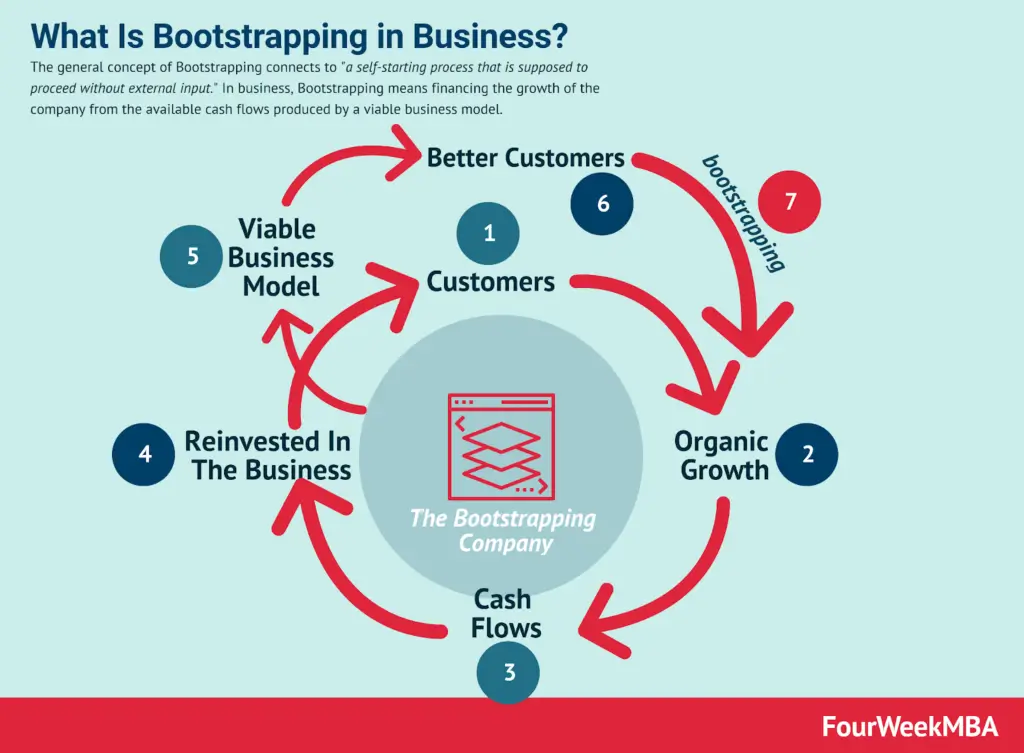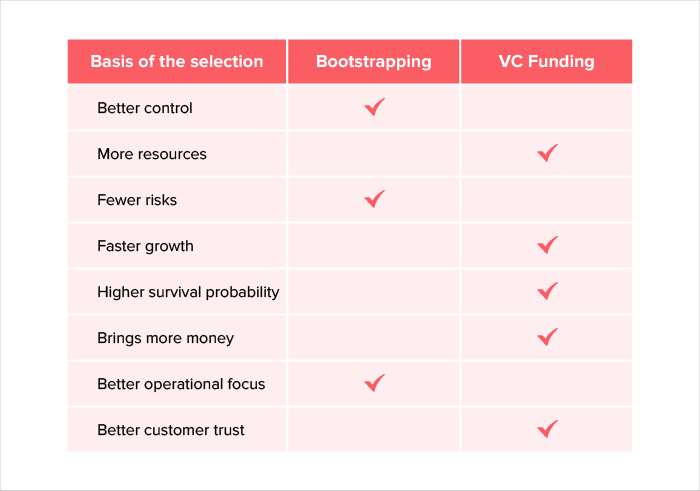What Is Bootstrapping? Your Complete Guide for 2024?

Are you an entrepreneur looking to take your business to the next level without relying on outside investors? If so, bootstrapping might be exactly what you need!
Bootstrapping is starting and growing a business with limited resources, often using profits from operations and personal savings.
This guide will provide you with everything you need about bootstrapping in 2023, from how it works to its pros and cons, so you can decide whether this strategy is right for your business.
Let's dive in.
Table of contents
What Is Bootstrapping?
The term bootstrapping originated in the mid-1800s and is derived from the phrase "pulling yourself up by your own bootstraps."
In the business context, bootstrapping refers to a process in which entrepreneurs use their resources (e.g., money, time, and energy) to start and grow their businesses without relying on outside investors or loans.

It also means that entrepreneurs use their resources to finance and manage the business rather than engaging in fundraising activities or taking out loans.
This approach can be a great way to start and grow a business without relying on outside capital, but it also comes with risks.
For example, without additional funding or a loan, entrepreneurs must be mindful of their cash flow and how much money they can invest into the business.
Of course, the risks associated with bootstrapping can be mitigated by specific strategies and practices, such as careful budgeting and cost-cutting.
This guide will cover some of the best strategies and practices for successful bootstrapping.
First, let's look at some of the significant benefits.
What Are the Benefits of Bootstrapping?
Bootstrapping offers several advantages to entrepreneurs, including the following:
- Control. Bootstrapping gives you complete control over the direction and growth of your business and allows you to make decisions without relying on outside investors.
- Profitability. Since entrepreneurs are not taking out loans or relying on outside investment, they can use their resources to grow the business and achieve profitability faster.
- Flexibility. Bootstrapping also allows entrepreneurs to pivot quickly if needed and try new strategies without being bogged down by outside investors.
- Innovation. Without the red tape associated with external investors, entrepreneurs can experiment and innovate without worrying about pleasing those stakeholders.
Also, bootstrapping entrepreneurs are often forced to become creative and resourceful to meet their goals, leading to more innovative business strategies.
What Are the Disadvantages of Bootstrapping?
While there are certainly some advantages to bootstrapping, it's essential to realize that there are also some disadvantages.
These include the following:
- Limited Resources - Bootstrapping limits the resources available to entrepreneurs, making it difficult for them to scale quickly or compete with larger businesses.
- Riskier - Bootstrapping can also be riskier than relying on outside investment since the resources available are limited, and there is no safety net if the business fails.
- Stressful - Running a bootstrapped business can also be very stressful since entrepreneurs are solely responsible for the success or failure of their venture.
Now that we've covered the basics let's look at some strategies and practices for successful bootstrapping.
What Strategies and Practices Should Entrepreneurs Use for Bootstrapping?
To bootstrap your business effectively, we recommend the following best practices:
- Set realistic goals. Successful bootstrappers start by setting clear, achievable goals and then creating a plan to reach those objectives. This helps entrepreneurs stay focused, prioritize tasks, and manage their resources more effectively.
- Track expenses. It's essential to track all costs, both large and small, to create a realistic budget and ensure you don't overspend. This will help entrepreneurs make the most of their limited resources.
- Focus on the essentials first. When bootstrapping, it's important to focus on the essential tasks and activities to help the business grow. This means allocating resources toward marketing, sales, product development, and other core functions.
- Utilize automation. Automation can greatly maximize efficiency and save time, allowing entrepreneurs to focus their resources on more pressing tasks.
- Leverage free or low-cost tools. As a bootstrapper, you should leverage free or low-cost tools whenever possible to save money.
- Network and collaborate. Successful bootstrappers know the importance of networking and collaboration. Forming relationships with other entrepreneurs or experienced professionals can be a great way to get advice, support, and access to resources.
Bootstrapping vs. VC Funding: Which is Right for Your Business?
The decision between bootstrapping and VC funding is a personal one. It depends on your industry, resources, goals, and risk tolerance.
Bootstrapping can be an excellent option for entrepreneurs looking to grow their businesses without taking on much risk or relying on outside investment.
The limited resources available to bootstrappers can be an obstacle. Still, it is possible to build a successful business with hard work and creativity.

For those with access to capital, VC funding can provide cash and resources to help a business snowball. However, it is essential to remember that there will also be pressure from investors and expectations to return their investment with a profit.
Some other things to consider might include:
- Your industry. Are you in a capital-intensive sector or with a long sales cycle?
- The size of your team and resources. Do you have a large enough team to support rapid growth?
- Your risk tolerance. Are you willing and able to take on the risks associated with VC funding?
- Your timeline. Do you need to start seeing a return on your investment immediately, or can you wait?
Ultimately, the decision between bootstrapping and VC funding should be based on your goals and resources. With careful planning and the right strategies, either path can lead to success.
The key is to create a strategy that works for you, your business, and your timeline.
Whether you bootstrap or seek VC funding, there is no one-size-fits-all solution for success.
Conclusion
Bootstrapping can be a smart way for entrepreneurs to grow their businesses without relying on outside sources of capital and can lead to long-term success.
Whether you decide to bootstrap or seek out VC funding, the important thing is to use your resources wisely. With careful planning and the right strategies, you can create a successful business regardless of your chosen path.

